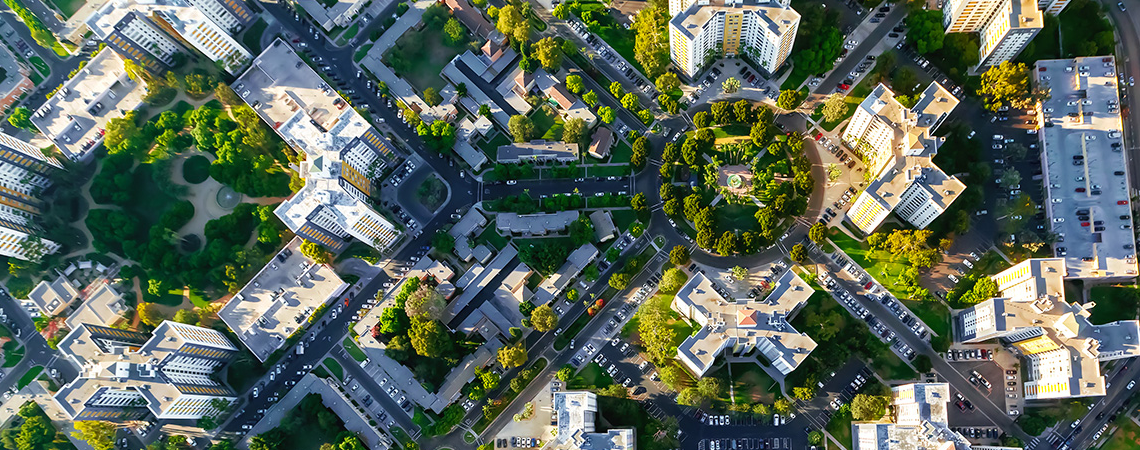
Giving a voice to the Energy Community
-
21 February 2024

Exploring the diverse meanings of an Energy Community: more than just a new way of producing and managing energy, it’s a true hub of value that interacts with the entire community.
Let’s discover its various meanings through the words of our experts: Matilde Scandroglio, Open Innovation and Strategic Partnership Expert, and Roberto Gatti, Head of Energy Technologies and Solutions.
In a hypothetical 2024 dictionary, “Energy Community” is likely to be one of the most consulted terms, thanks largely to a European Commission decree from November 2023 encouraging the expansion of renewable energy self-consumption. This concept is set to expand significantly in relevance over the next five years: the Electricity Market Report 2023 by the Energy & Strategy School of Management Politecnico di Milano estimates a potential 7 GW of photovoltaic installations by 2028. The exact number of energy communities this will translate into is difficult to estimate, since much will depend on their size, composition, and the details of the regulatory framework expected by early 2024.
Several factors come into play, but we can already imagine its function in everyday life. Picture a web connecting houses, the town hall, and then the school, the swimming pool, the bakery, and the mechanic’s workshop. Some of these buildings will be equipped with photovoltaic systems and, in many cases, storage batteries, while others might not. Yet, in each building there will be someone studying by a lamp, ironing, watching television, drying their hair in a changing room, charging an electric car, or using a cash register, all powered by locally produced, renewable, and collectively consumed electricity.
In this real-life scenario, the energy community ceases to be just a definition and becomes a vibrant, living entity. The spotlight shifts to the various participants, the informed, energy-conscious citizens, who – collectively – are building a new future that until now we have only been able to imagine.
Energy Community: The Definition
Under EU Directive 2018/2001 (RED II), an energy community is a legal entity based on “open and voluntary” participation, which is “autonomous” yet subject to the proximity of its members to production facilities. It can consist of “natural persons, small and medium sized enterprises, or local authorities, including municipalities,” and its principal aim is “to provide environmental, economic or social community benefits for its shareholders/members or for local areas where it operates”.
Technically speaking, it resembles a virtual network connecting various producers and consumers, all benefiting from the arrangement. A key aspect that distinguishes membership in an energy community is energy sharing: those with their own installations can use the energy they produce and share any excess with other community members, receiving financial rewards in return.
However, defining it simply as a self-production and energy management model is limiting and overlooks its broader significance: it is, in fact, a more expansive value system where concepts like sharing, education, and change take on a special meaning. This is rooted in the Latin origins of the word community: cum munio, meaning ‘building together’.
Plenitude stands ready to support those committed to driving the energy transition through the formation of energy communities: from feasibility checks and project development to providing the tools required to generate renewable energy, and even handling the commissioning and administrative management. It’s a journey we can only build together: discover more here.
Don’t stop here
There’s much more to discover!
Other related articles
SUSTAINABILITY - 02/03/2025
“Borse del Cuore": supporting the future of young people, a shared commitment
Francesca Rava Foundation and Plenitude together to offer growth opportunities to “NEET and in situations of fragility” young people.
SUSTAINABILITY - 01/02/2025
Exducere Plenitude: with L’Albero della Vita Foundation to combat educational poverty
Study support, STEM (Science, Technology, Engineering, and Mathematics), local culture: the three areas of intervention of the project, which involved six Italian cities.
SUSTAINABILITY - 12/06/2024
Energy for everyone: Plenitude's commitment alongside Banco dell’energia
At the sixth Plenary Assembly of the Banco dell’energia Foundation, new projects for 2025 were unveiled, along with updates on ongoing initiatives.


